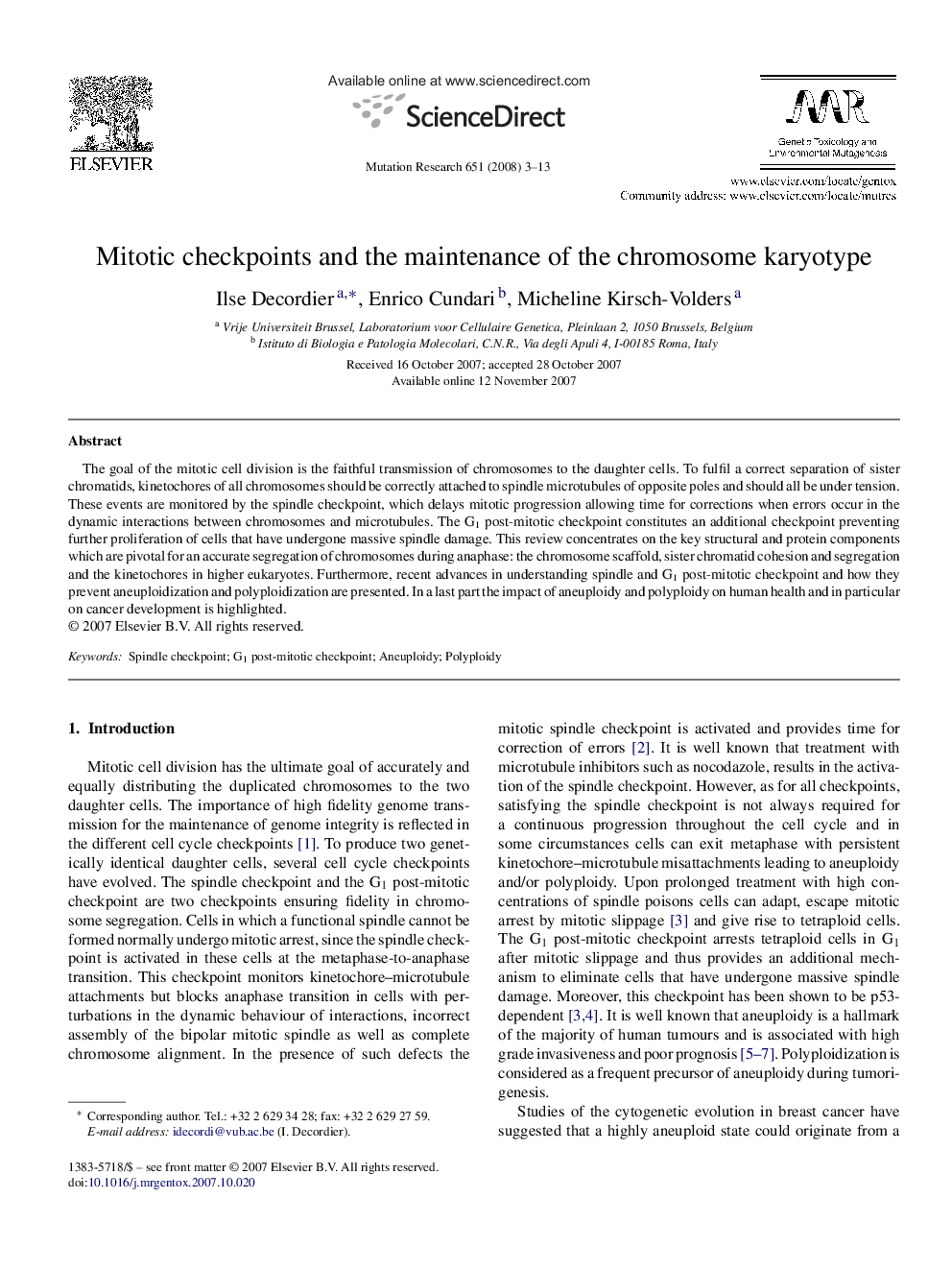| Article ID | Journal | Published Year | Pages | File Type |
|---|---|---|---|---|
| 2148953 | Mutation Research/Genetic Toxicology and Environmental Mutagenesis | 2008 | 11 Pages |
The goal of the mitotic cell division is the faithful transmission of chromosomes to the daughter cells. To fulfil a correct separation of sister chromatids, kinetochores of all chromosomes should be correctly attached to spindle microtubules of opposite poles and should all be under tension. These events are monitored by the spindle checkpoint, which delays mitotic progression allowing time for corrections when errors occur in the dynamic interactions between chromosomes and microtubules. The G1 post-mitotic checkpoint constitutes an additional checkpoint preventing further proliferation of cells that have undergone massive spindle damage. This review concentrates on the key structural and protein components which are pivotal for an accurate segregation of chromosomes during anaphase: the chromosome scaffold, sister chromatid cohesion and segregation and the kinetochores in higher eukaryotes. Furthermore, recent advances in understanding spindle and G1 post-mitotic checkpoint and how they prevent aneuploidization and polyploidization are presented. In a last part the impact of aneuploidy and polyploidy on human health and in particular on cancer development is highlighted.
